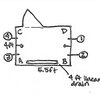Trouble with Teflon. Use Pipe Joint Conpound?
orourke
14 years ago
Featured Answer
Sort by:Oldest
Comments (8)
jake2007
14 years agolast modified: 9 years agolazypup
14 years agolast modified: 9 years agoRelated Professionals
Boise Plumbers · Chantilly Handyman · Beach Park Kitchen & Bathroom Remodelers · Dearborn Kitchen & Bathroom Remodelers · Emeryville Kitchen & Bathroom Remodelers · Folsom Kitchen & Bathroom Remodelers · Lakeside Kitchen & Bathroom Remodelers · Los Alamitos Kitchen & Bathroom Remodelers · Pasadena Kitchen & Bathroom Remodelers · Patterson Kitchen & Bathroom Remodelers · Pico Rivera Kitchen & Bathroom Remodelers · Port Angeles Kitchen & Bathroom Remodelers · Roselle Kitchen & Bathroom Remodelers · South Barrington Kitchen & Bathroom Remodelers · Sharonville Kitchen & Bathroom Remodelersorourke
14 years agolast modified: 9 years agotim45z10
14 years agolast modified: 9 years agoorourke
14 years agolast modified: 9 years agofixizin
14 years agolast modified: 9 years agoorourke
14 years agolast modified: 9 years ago
Related Stories

BATHROOM WORKBOOK12 Ways to Get a Luxe Bathroom Look for Less
Your budget bathroom can have a high-end feel with the right tile, stone, vanity and accessories
Full StoryMore Discussions









lazypup